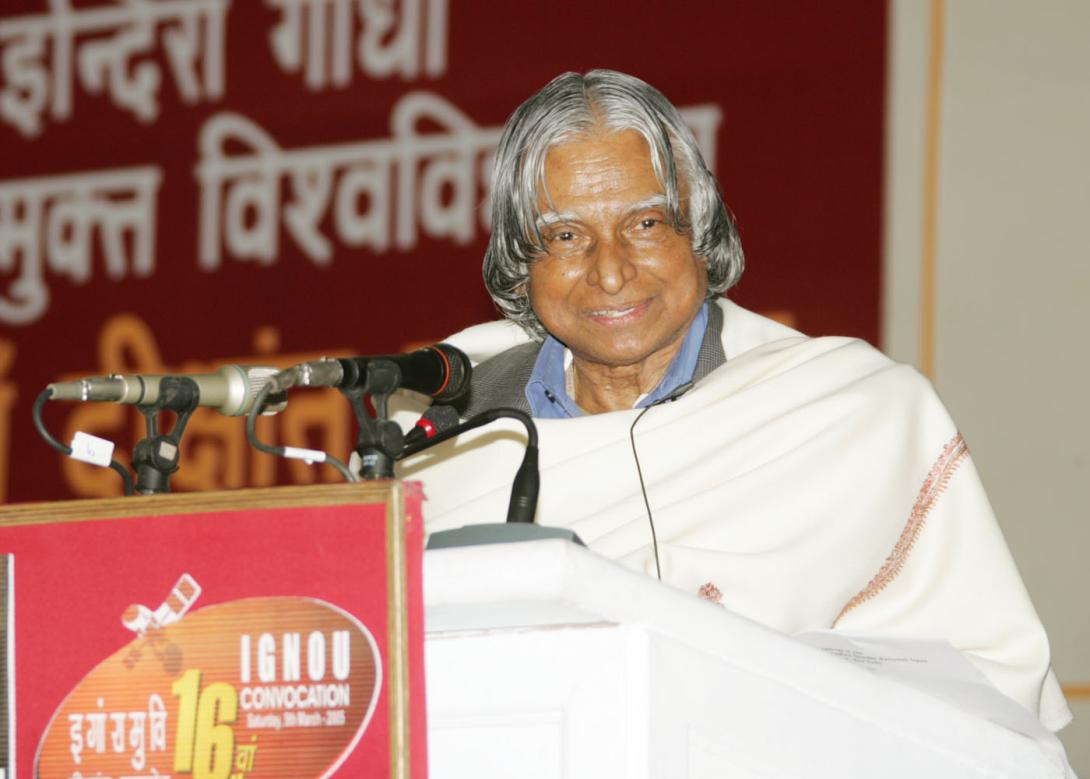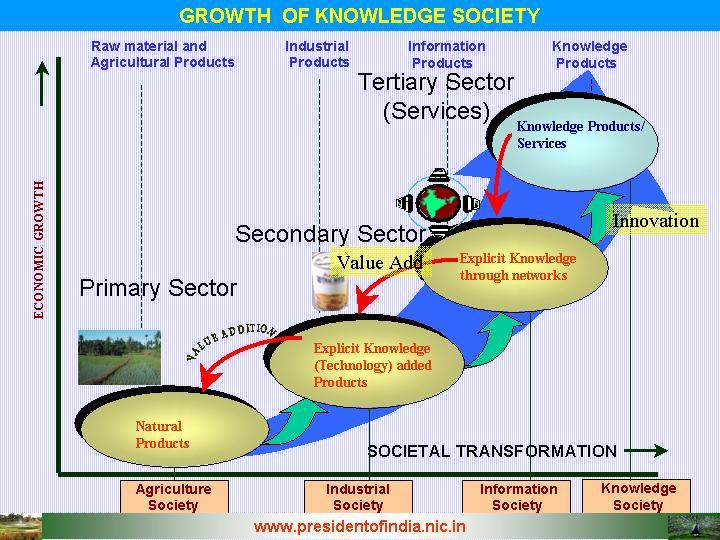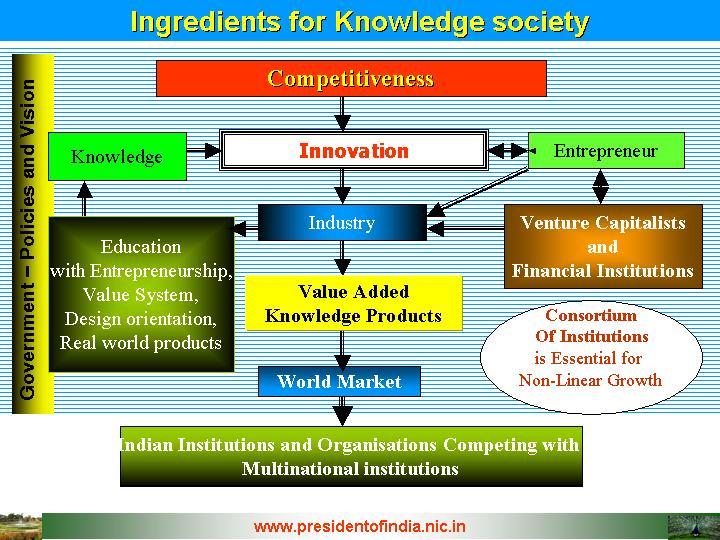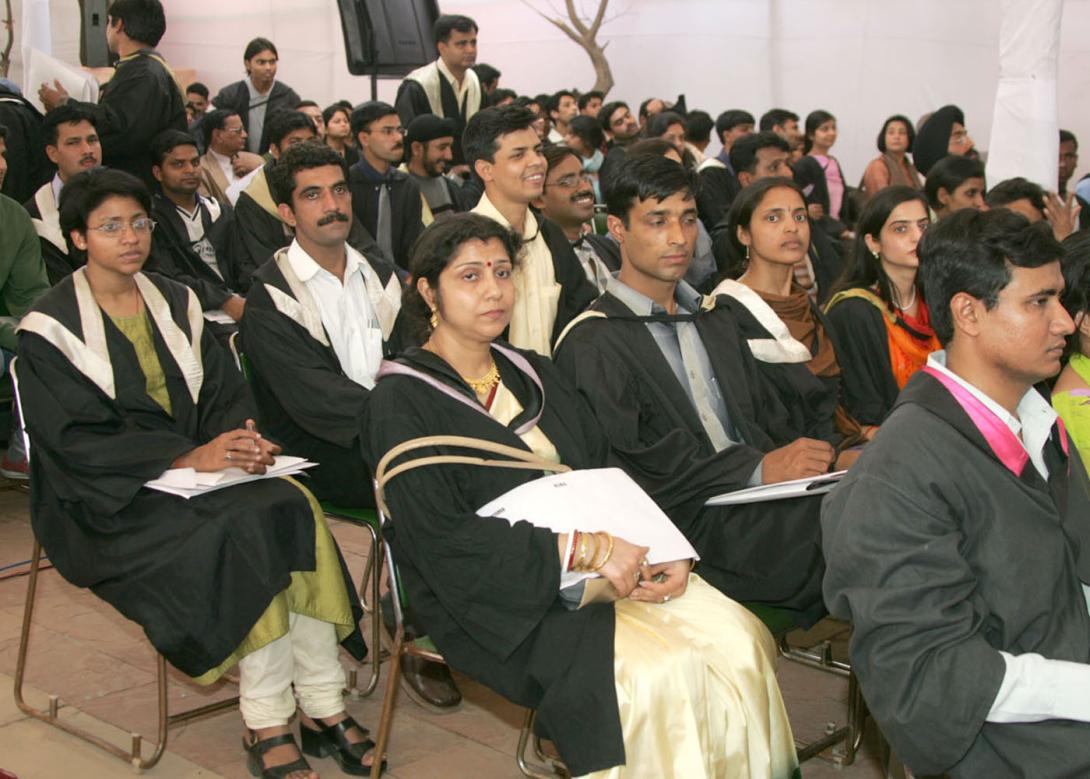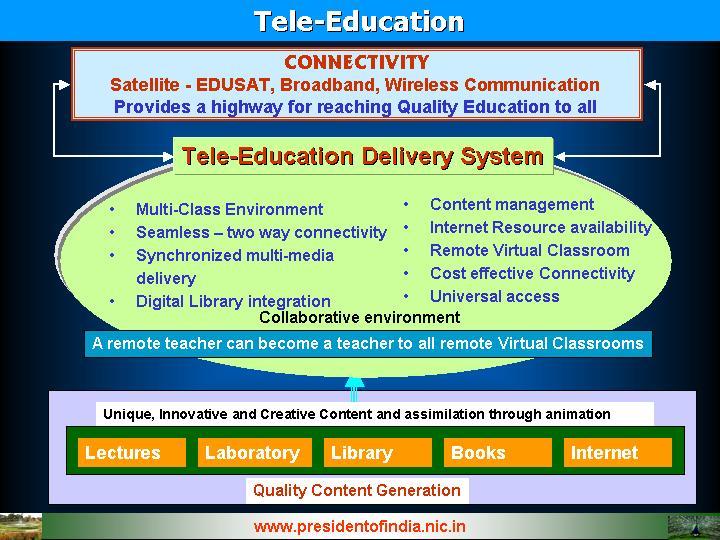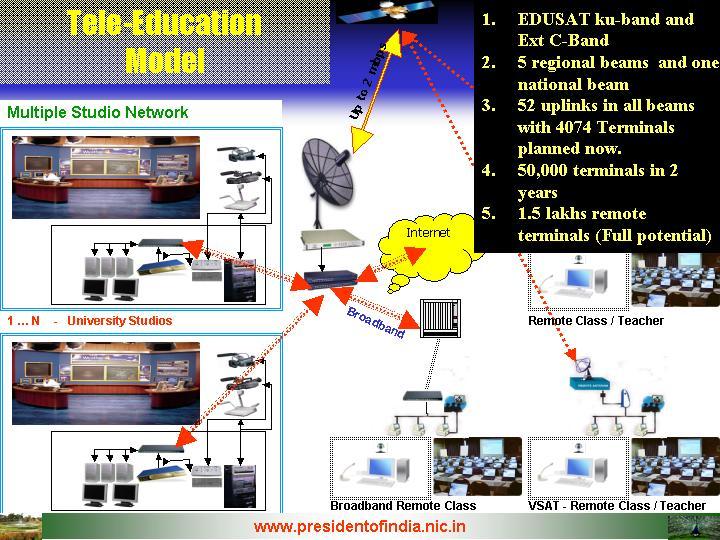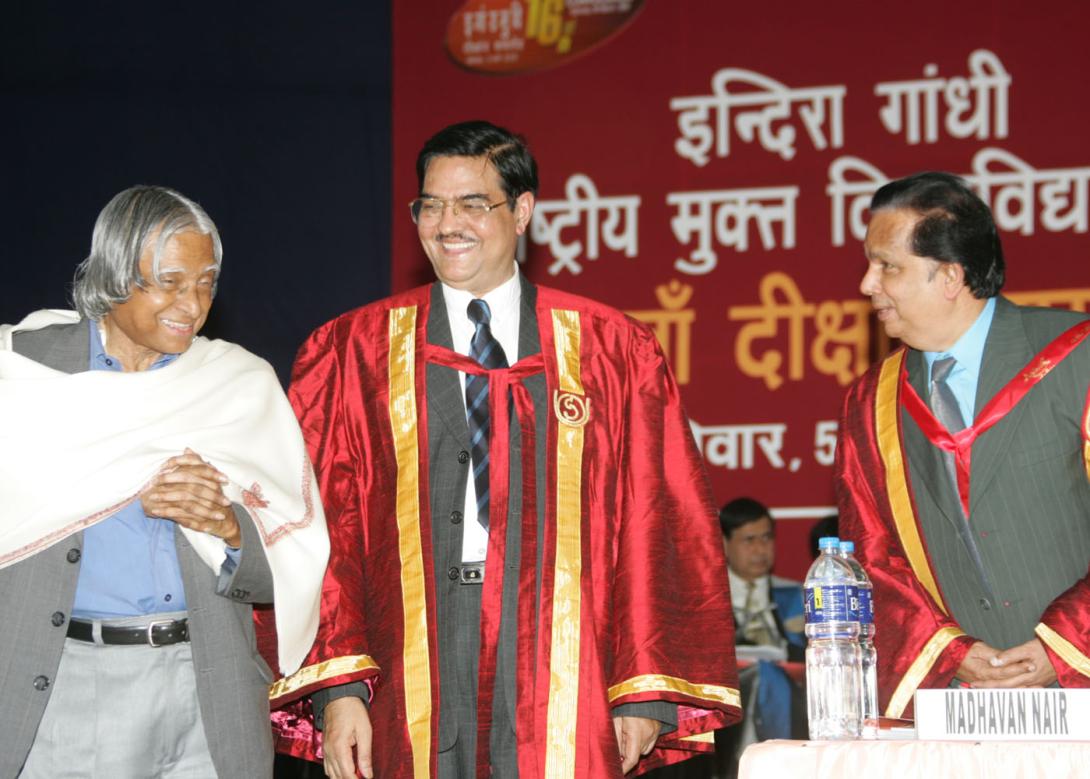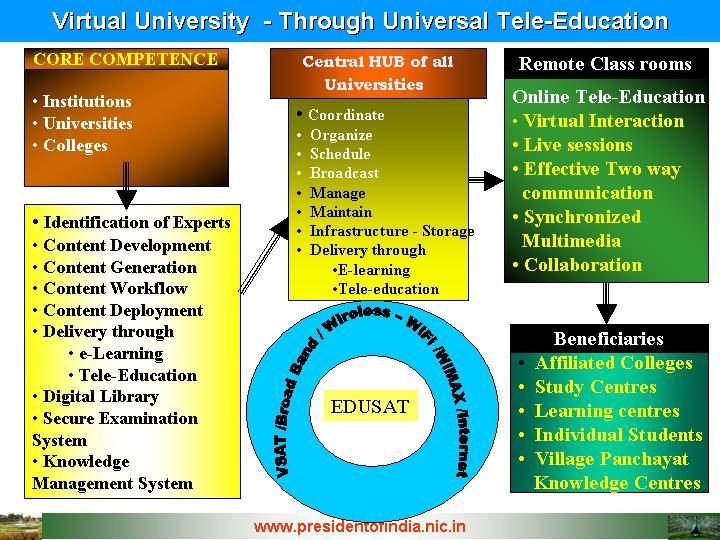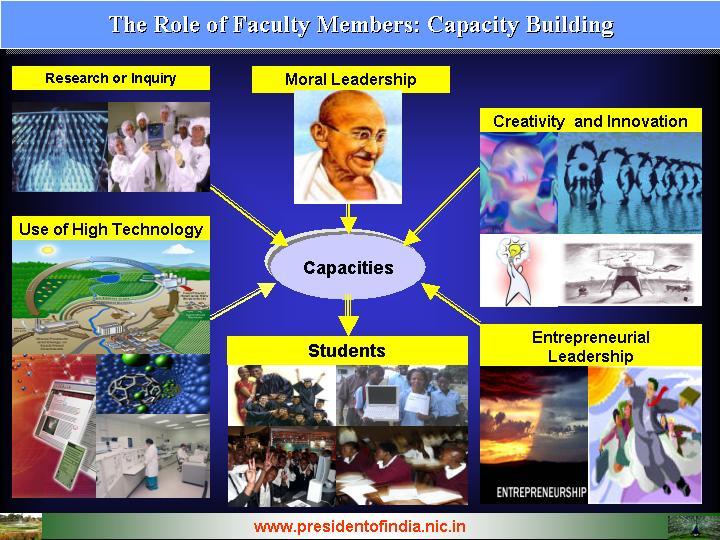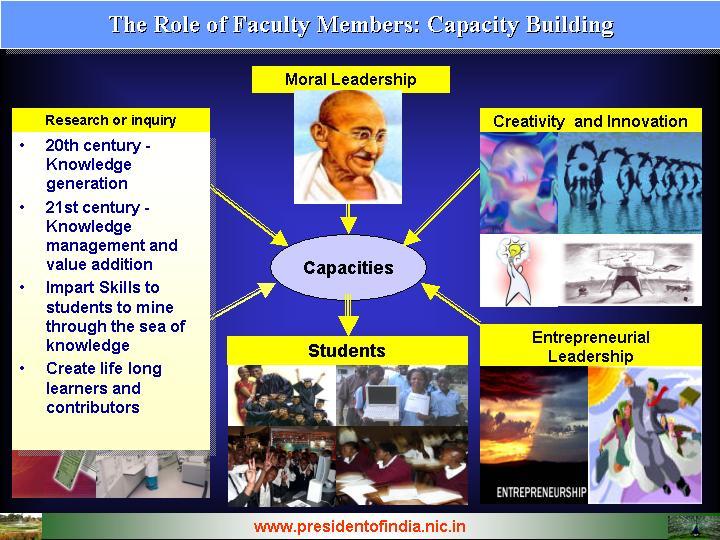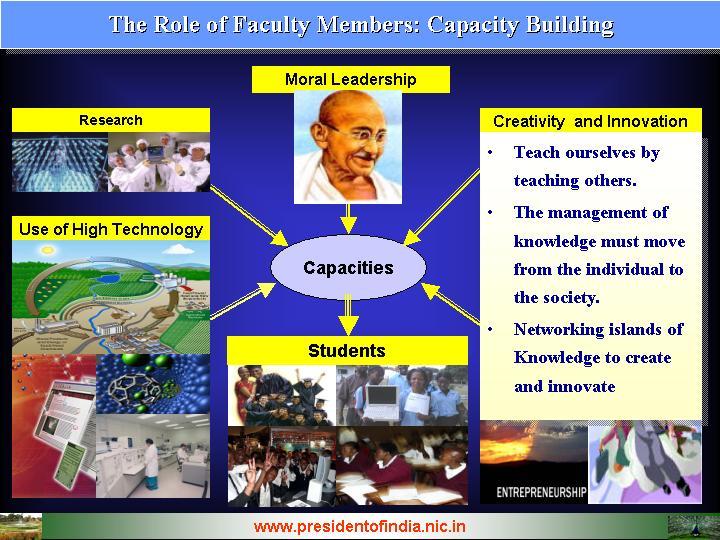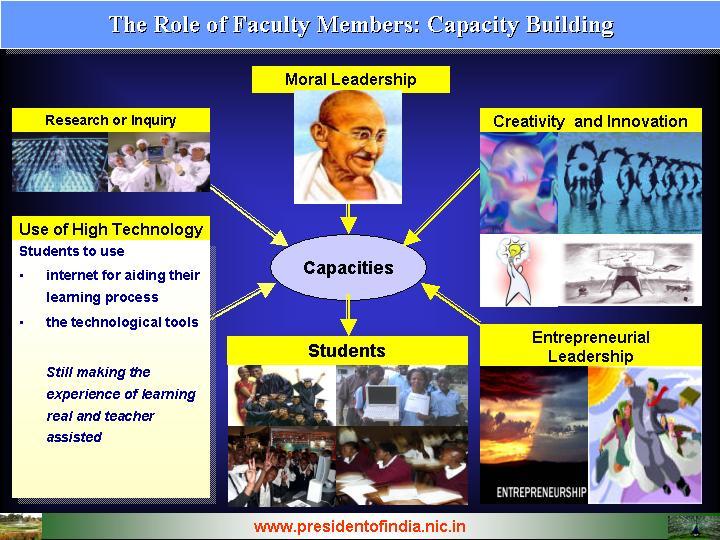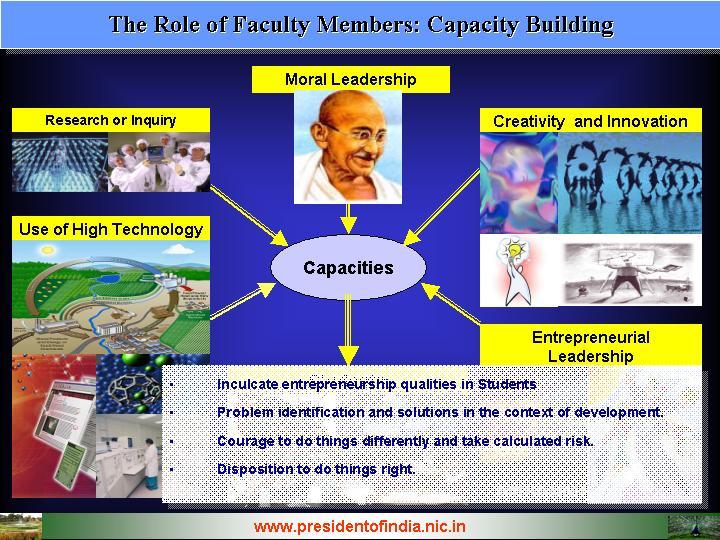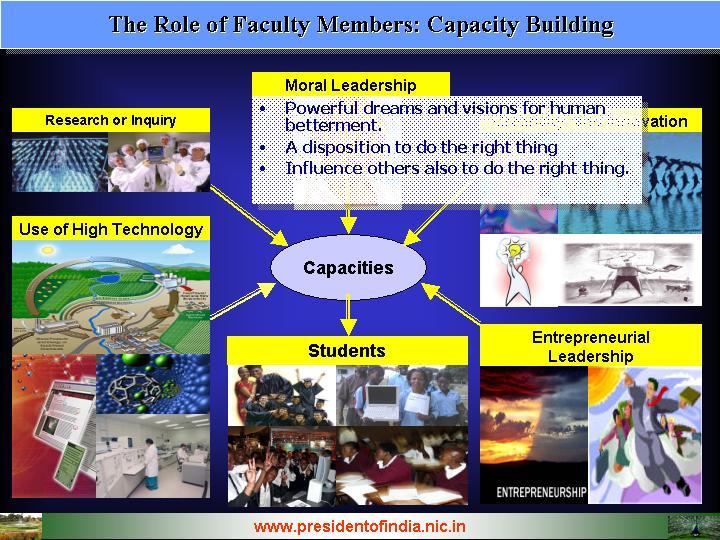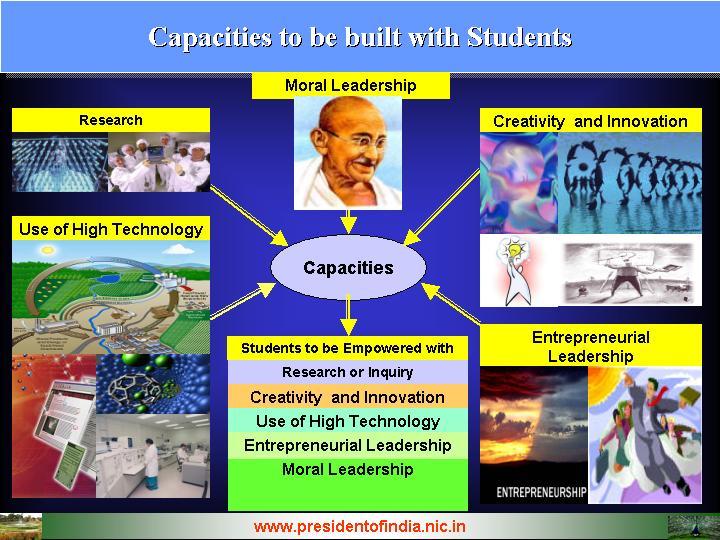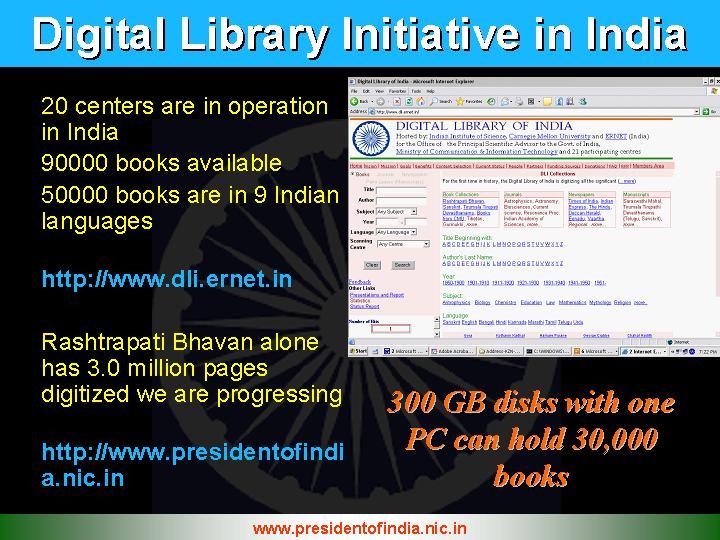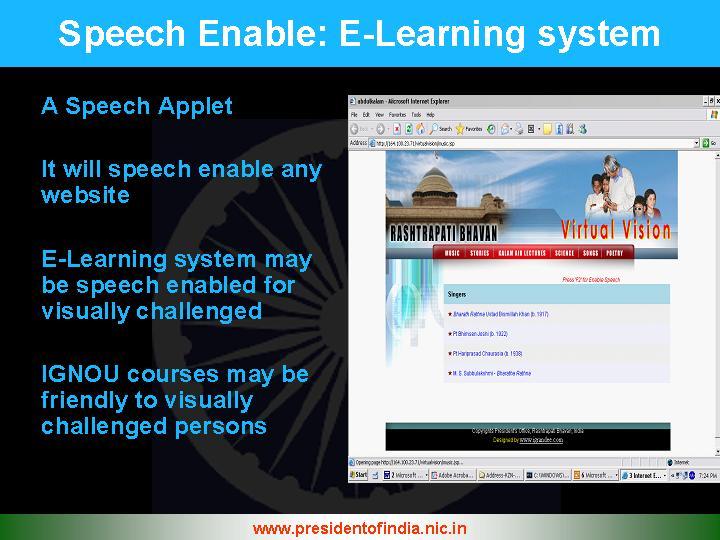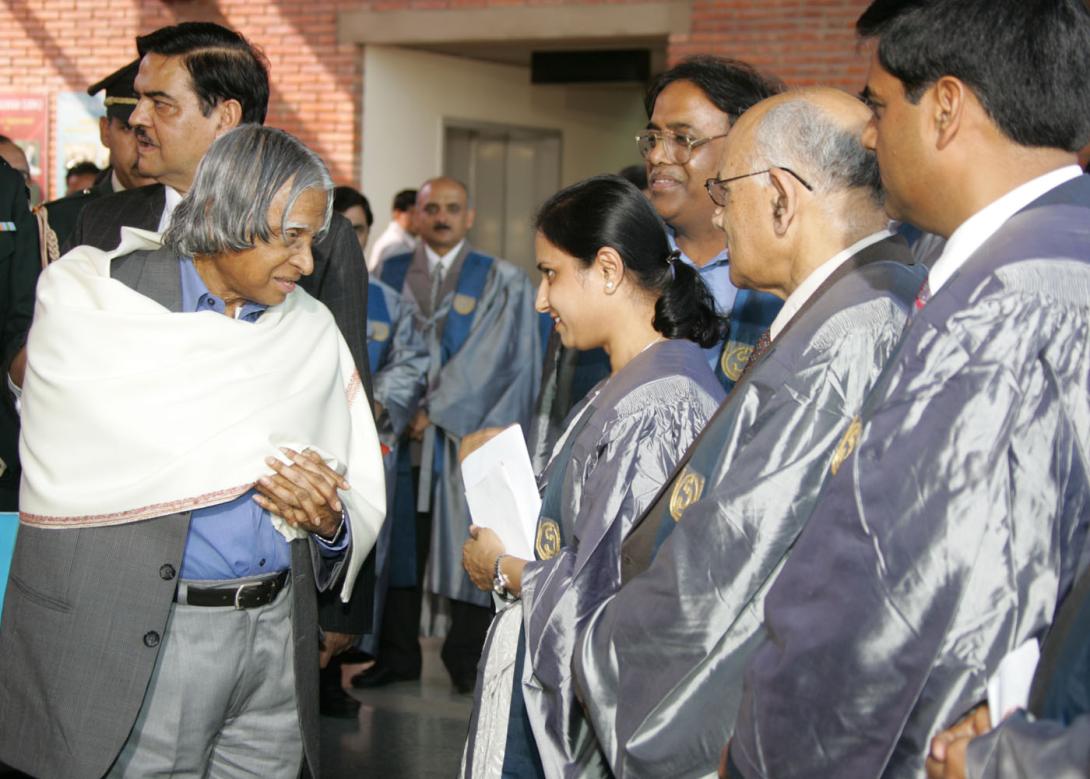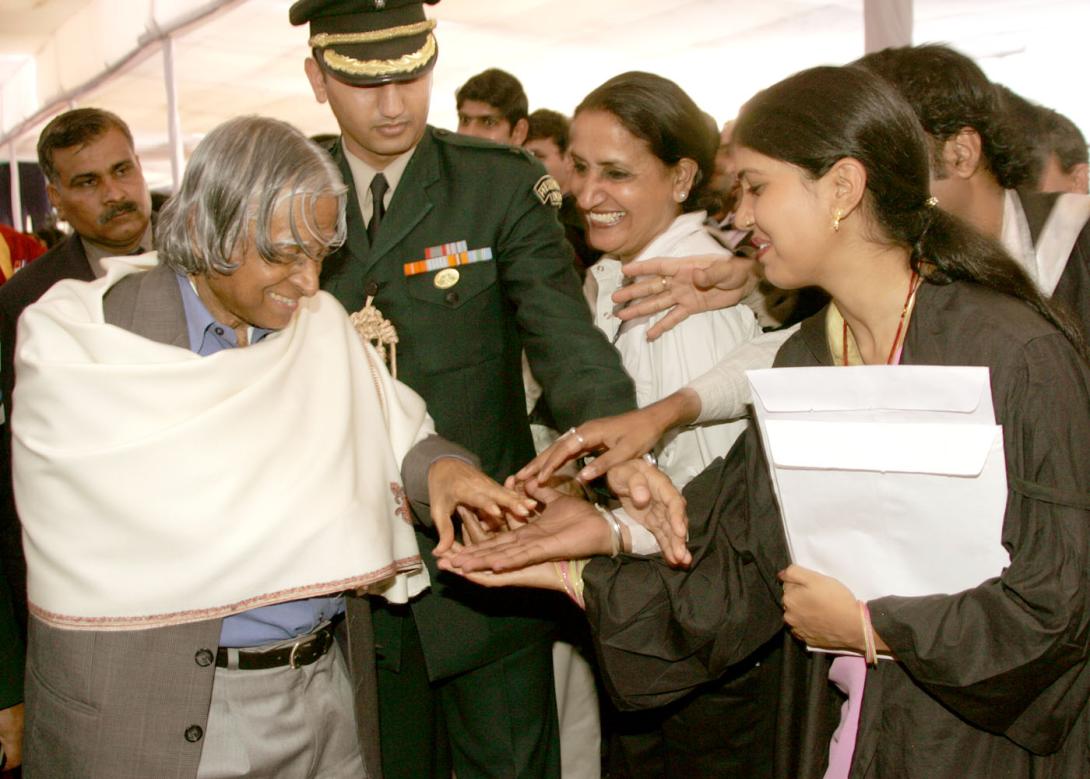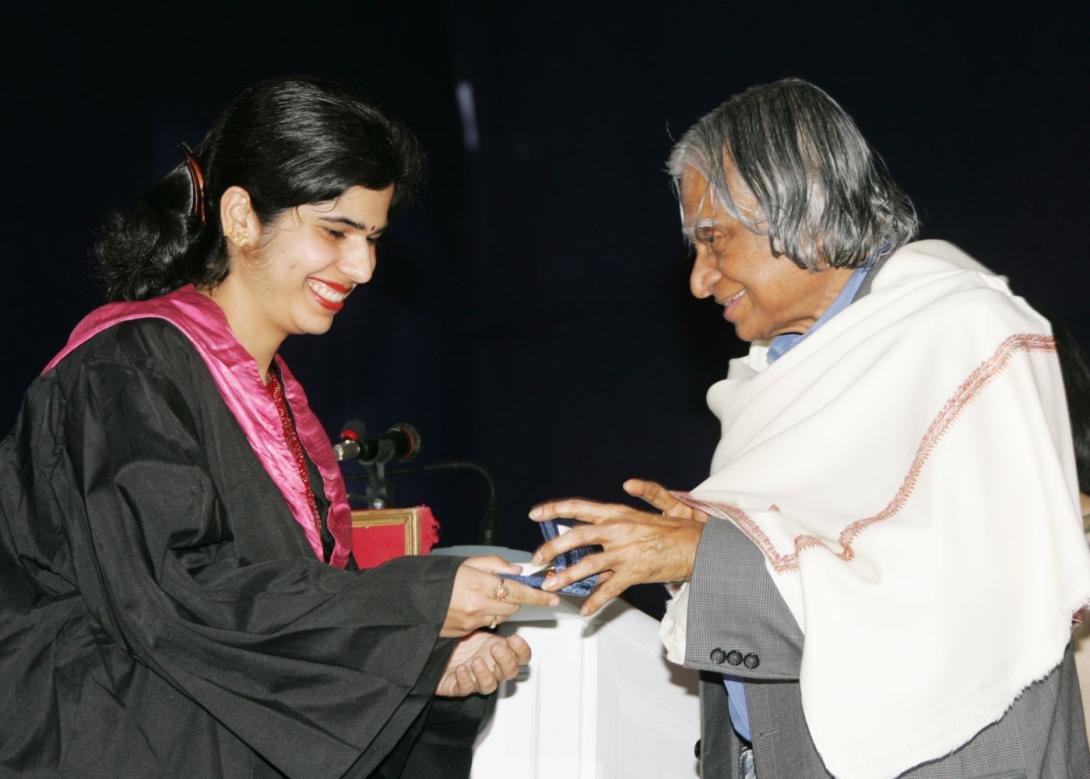Address at the 16th Convocation of Indira Gandhi National Open University
New Delhi : 05-03-2005
How to add value to Distance Education?
I am indeed delighted to participate in the 16th Convocation of the Indira Gandhi National Open University (IGNOU). I greet the Vice Chancellor, Pro-chancellor, Directors of schools, professors, teachers and staff for their contribution in shaping young minds to contribute to the nation in multiple fields. I take this opportunity to congratulate the University students for their academic performance. The Universities have a major responsibility in nation building through imparting education to all those who aspire to learn more by providing distance education opportunity to students in remote areas in multiple disciplines. In addition, there are many students who interrupt their studies to earn for their family. They have a desire to improve themselves and also there are knowledge seekers. Distance education provides them such an opportunity. Thus Distance Education has a large socio-economic relevance. I am happy to note that this University has contributed substantially in the development of higher education in the country and have over 1.3 million students in their role at present. This university has contributed to the cause of spreading education for the last one and half decades. I was thinking what thoughts, I can share with this enlightened members of this distance learning centre. I have selected the topic "How to add value to distance education?".
Growth of Knowledge Society
During the last century, the world has undergone a change from agriculture society, where manual labour was the critical factor, to industrial society where the management of technology, capital and labour provided the competitive advantage. Then the information era was born in the last decade, where connectivity and software products are driving the economy of a few nations. In the 21st century, a new society is emerging where knowledge is the primary production resource instead of capital and labour. The Knowledge society is powered by innovation capacity. Efficient utilisation of this existing knowledge can create comprehensive wealth of the nation and also improve the quality of life - in the form of better health, education, infrastructure and other social indicators. Ability to create and maintain the knowledge infrastructure, develop knowledge workers and enhance their productivity through creation, growth and exploitation of new knowledge will be the key factors in deciding the prosperity of this Knowledge Society. Whether a nation has arrived at a stage of knowledge society is judged by the way the country effectively deals with knowledge creation and knowledge deployment in all sectors like IT, Industries, Agriculture, Health Care etc.,
IGNOU has a major role to play in this transformation process of our society into a knowledge society through their value added distance education system. There has been considerable effort to apply technology for improving the delivery of distance education system over the years. With the availability of an exclusive education satellite (EDUSAT), the time is ripe for making intense use of ICT to create an interactive virtual class rooms in all our remote areas. There are also a number of State and Central Universities which provide Distance Education. I believe they should share their experiences, teaching materials etc. to maximize the benefits for all the students. Now I would like to discuss the ingredients of Knowledge Society.
Necessary ingredients for Knowledge Society
Knowledge is converted into wealth for social good through the process of innovation. Innovation is an important factor for the competitiveness of both service and manufacturing sectors. Innovation tends to emanate less from R&D and more from other sources including organizational change. Hence there is an urgent need to establish an innovation system in the country. Such a system would involve creation of clusters, which are networks. This network can include inter dependent firms, knowledge producing institutions/ universities, colleges/institutes, research institutes, technology providing firms/bridging institutions, (for example think tanks, providers of technical and consultancy services) and customers linked in a value addition creating production chain. The concept of clusters goes beyond that of a firm network, as it captures all forms of knowledge sharing and exchange. Thus, an innovative system with its clusters would tap into the growing stock of global knowledge, assimilate and adopt it to local needs and finally create new knowledge and technology. IGNOU should propagate the new knowledge among the 1.3 million students spread in different parts of the country and abroad. This will be the greatest contribution IGNOU will be making to provide value added education to the youth of the nation who are the vital resource for transforming India into a developed nation by 2020.
I understand that IGNOU has taken number of steps to apply ICT for providing value added services to the distance education students. Your effort in launching the Gyan darshan, Gyan vani, Tele-conferencing, interactive radio counseling, students support services network are indeed a progressive step towards the distance and wider outreach of the education programmes. I understand that IGNOU is working with EDUSAT programme to create hundred point to point interactive terminals soon. Since you are in this mission, I would like to share my experience with a universal tele-education system implemented in Rashtrapati Bhavan.
A multi-pronged approach for Tele-Education
A three-pronged approach is essential to make distance education programme viable and a successful proposition through the universal tele-education system to all remote parts of the country. Since the EDUSAT is providing the connectivity the other two essential components which are vital for the success of the programme are Tele-Education System and the Quality Content Generation and deployment.
Tele-education Delivery System
I would like to narrate my experience in the development of a Tele-education delivery system. I had a dream; a good mathematics teacher teaching mathematics in a remote village like Chandipur school in Orissa, should be able to teach number of schools located in different parts of the country including Konkan villages in Maharashtra, interact with the students in sequence and be able to clarify the doubts. Also the teacher must be able to draw the knowledge from various sources on the fly, such as internet, digital library, generated creative content and the lectures given by various experts in the same field and deliver to all the students as if they are in the same simulated class room in a cost effective manner. Such a system has been implemented in Rashtrapati Bhavan.
Characteristics of System: This universal tele-education delivery system works via heterogeneous network platform through IP protocol. It provides virtual classrooms in a multi class and studio environment with seamless two-way interaction between the teachers and students in a collaborative framework. It provides seamless, one-to-one, one-to-many connectivity, through the broadcasting network in a multicasting mode of delivery. It seamlessly enables a remote teacher to become a teacher to all the students in a session. Unlike the other video conferencing systems and multimedia tools currently in use for tele-education purposes, this Interactive Universal Tele-education delivery system creates a virtual classroom. It enables the teacher to take the student to a live virtual tour of the subject. This provides a cost effective solution for interactive content delivery. In a comparative basis we can create 250 nodes tele-education system for interactive delivery at a cost of establishing 4 multi-station video conferencing systems.
The Experience: Recently, I addressed five colleges in different parts of Punjab as a part of Distance Education Programme. I referred in my classroom the subject what I was teaching, relevant Digital Library reference, a page from book reference and my talk delivered during an international conference on e-governance through my website. I could see all the class students from various locations. They can also see me and interact with me. Such an interactive tele-education delivery system is fully functional. This integrated solution will enable IGNOU to realize a cost effective virtual dynamic classroom. IGNOU may like to study the system and make use of it for realizing the goals of the university to become a world class institution in distance education. This is particularly important in view of IGNOU is imparting education in many foreign countries and have to compete with Multinational universities. I understand that the Universities abroad have already adopted such systems and the students are enriched through quality education imparted through the innovative use of ICT.
Interactive Lecture: I will be very happy to take three classes relevant to the courses conducted by IGNOU as part of Distance Education Programme. These lectures will be available to all the centres connected to IGNOU and they should interact with me live and have the facility to ask questions to which I can respond. Rashtrapati Bhavan will assist you in setting up the tele-education delivery system in the hundred interactive terminals for this programme. I am sure that this should be possible within the next three to four months time. Now I would like to discuss the next important aspect in Distance Education, content generation, in which you have core competence and large library of multi-media content.
Quality Content Generation
There are three components for education: lectures, practical or laboratory and library. The content includes all the above three. Content can be generated in many ways. The first one is the assimilation of the subject by an expert teacher through research study of many books and articles leading to the generation of quality and creative content in a presentable format. The teacher presents in a unique and innovative way to make the content appealing and easily understandable to the students. The second form of content could be on a self-learning method by breaking down the content into a series of question answer models. Third may be from various books, which can be extracted through a digital library and presented just-in time to all the remote students. Fourth may be from Internet, where wealth of information is available. Teacher may search the information in the Internet and push the content live through the tele-education system.
The content should have supportive animations, which may even bring virtual laboratories and virtual immersion effects to the remote students. When the content is generated, it should be a sharable learning object across the nation and across all platforms. I understand that IGNOU has already developed substantial amount of content during the last one and a half decades. The content can also be further improved by making use of the student?s creative and innovative thoughts under the guidance of the expert teachers as a group activity as well as by sharing experiences with other DE programmes of other University as I have suggested earlier.
As an example, my lectures delivered during various functions are dynamically updated in our website. During the address many participants ask questions on several topics. The answers to these questions are also placed in the website as supplementary information. Similarly, the teachers after delivering the talk will also be asked a number of questions by the students. The proceedings of the questions & answers session can be added to the content document for enriching it. Now I would like to discuss, how the Indira Gandhi National Open University can become a virtual university for promoting value added quality education to different parts of the country and abroad.
Virtual University
It is time that we should start looking at the possibility of converting IGNOU as a Virtual University in India through networking of the resources of different institutions based on their core competence. This Virtual University can have the following tasks:
a) Act as a central hub of all the resource centres of different networked institutions.
b) Identify experts of national/international eminence in specialized areas and nominate institutions of eminence.
c) Coordinate, organize, schedule and broadcast the lecture of specialists at a mutually convenient time to all participants.
d) Record the live transmission of the lecture with interaction details in a data bank for easy access by participants for review learning.
e) Digitize all the university libraries and make it available for seamless access by all the universities.
f) The whole distance education programme need to become learner centric.
This experiment across the country will provide a common platform for teaching in Colleges, Universities and even vocational courses. This will give equal emphasis on theory and experiments in spite of the fact that it will be done in the cyberspace. Such is the power of the technology and our understanding of it. This facility would also help in expansion of telecommunication and IT services. All this would lead to value addition to the distance education programme through the synergy of multiple institutions. Now I would like to discuss the role of faculty members in capacity building among our youth.
The Role of Faculty Members: Capacity Building
Many of our faculty members have successfully groomed young innovators who can innovate and create innovative organisations, which are relevant to the society
The success of your students is a testimony to your great service. I am sure that each one of you would create many innovators in the field of science, engineering, management, agriculture, law, information technology and other disciplines taught by this University.
For participating in the nation building tasks, the capacities required to be built among the students by the faculty members are: the capacity for research and inquiry, the capacity for creativity and innovation, particularly the creative transfer of knowledge, the capacity to use high technology, the capacity for entrepreneurial leadership and the capacity for Moral Leadership.
The aim of the faculty members should be to build character, human values enhance the learning capacity of the students through technology and build the confidence among them to be innovative and creative which in turn will enable them to contribute towards making their organisations competitive in the global environment.
Digital Library Initiative
As you may be aware India has a mission of digitizing million books through a digital library programme. This has been initiated based on a proposal by Prof. Raj Reddy of Carnegie Mellon University (CMU), Pittsburgh and Prof. N. Balakrishnan of IISc, Bangalore. Prof. Raj Reddy, an NRI has taken a special initiative of creating this programme in India, his mother land for improving the educational system in the country. This has been his passion for many years. This programme is progressing well and we have already digitized 90,000 books out of which 50,000 are already on the web http://www.dli.ernet.in. Many of the books are in Indian languages. This Digital Library of India Initiative had also become test bed for many Indian Language Technology Research including the development of Machine Translation Systems, OCRs, Summarizers and so on in Indian languages. More than 21 centres spanning academic institutions, social organizations and Government agencies including the Rashtrapati Bhavan have partnered in creating this huge repository of knowledge. This programme is fully supported by the Ministry of Communication and Information Technology. IGNOU can utilize the facilities of the digital library initiative and digitize all the course material available with them for different disciplines. This will enable the university to offer large number of e-learning courses and design web based education.
Speech Applet Virtual Vision
Since IGNOU is working on Education programme for differently abled students. I would like to mention an experience relating to the provision of a special learning facility to the Visually Challenged students based on the discussions; I had with Mr. Deependra Manocha who wrote to me few months back about his inability to read my speeches in the website. Later, I met Mr. Asif Iqbal, who told that he was using the computer for his studies, exams, presentations and communications. For this he was using a third party software which is costly and beyond the reach of an ordinary person. This motivated me to think of getting software developed, which can become a versatile, low cost tool for all trainers and self help learning system for visually challenged persons through web.
Based on this thought, a Speech Applet "Virtual Vision" has been designed at Rashtrapati Bhavan. The main objectives were that it should: be a versatile tool, have a voice enabled interface, configurable with any web server, provide an audio output of any web content on mouse-over and mouse click. It should be available to access through web, and be easy to deploy the course designed for visually challenged persons in an intranet and internet environment. The team has developed and produced a Speech Applet "Virtual Vision" having these characteristics within a period of seven weeks. It can be operated using a keyboard for its activation and deactivation of speech, which makes them feel interactive. The speech applet can be configured to an e-learning system, wherein the courses, training materials for the visually challenged persons can be deployed and they can learn with ease through this tool. IGNOU may like to study this applet and incorporate it as a part of the learning programme for visually challenged students. Now I would like to discuss about the need for innovation in the education system for preparing our youth to face global competition.
Since large number of students has qualified from IGNOU during the last one and a half decades, I would recommend mobilizing of this vital resource for the development of the University which can be done through the establishment of a special portal.
IGNOU Web Portal
The four lakh seventy thousand alumni who have passed out from IGNOU during this period are presently working in different organisations.
IGNOU should have a continuing education portal which provide educational services from its alumni, from the industry, from the academia to enlighten and knowledge enable the faculty and students with the real time experiences. Portal will act an interface between the alumni and the current students. They can share their experiences, they can discuss among themselves, they can give suggestion for teaching improvements, course contents, dynamic upgradation of the syllabus based on world wide developments, creation of employment opportunities and adaptation of technology application for improving the learning methods. IGNOU should find a method to attract the alumni to contribute for this portal and also organize yearly event to bring the alumni and the learners together for mutual benefit.
Conclusion
Ultimately, education in its real sense is the pursuit of truth and empowering ourselves to contribute to the society. It is an endless journey through knowledge and enlightenment and learning new skills for better life for all. Such a journey opens up new vistas of development of humanism where there is neither scope nor room for pettiness, disharmony, jealousy, hatred or enmity. It transforms a human being into a wholesome whole, a noble soul and an asset to the universe. Universal brotherhood in its true sense becomes the sheet anchor for such education. Real education enhances the dignity of a human being and increases his or her self-respect. If only the real sense of education could be realized by each individual, and carried forward in every field of human activity the world will be so much a better place to live in.
There is a need for IGNOU to have a mission to promote value based quality education among the youth of the nation which is the foundation to ensure the creation of enlightened citizens who will make a prosperous, happy and strong nation.
May God bless you.

